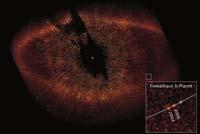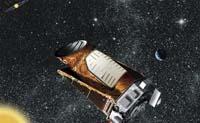Yes, but...
2011/01/14 Galarraga Aiestaran, Ana - Elhuyar Zientzia

With the help of the Kepler telescope they discover the first exoplanet of size similar to that of the Earth. Those detected so far are at least the size of Neptune and almost all are gigantic gas exoplanets. Therefore, astronomers who have participated in the research have considered the discovery as a "milestone".
The new exoplanet has been called kepler-10b. It is relatively close to the Solar System at 560 light-years and is 40% larger than the Earth. Its density is 1.6 times higher than that of the earth, so it is very likely to be rocky.
However, here the main parities end. And in these cases the possibility of having life is immediately mentioned, and on this occasion they have definitely discarded it, since the exoplanet is too close to its sun to take life: It is 2.5 kilometers away, 2% distance between the Earth and the Sun. Therefore, more than rocky, the crust of the exoplanet is in the form of lava.
However, astronomers do not give up and continue to look for Earth-like exoplanets. Next month, the 400 exoplanets detected by Kepler will be released. Will the candidate for life be among them?
Image courtesy of: ANDÉN

Gai honi buruzko eduki gehiago
Elhuyarrek garatutako teknologia






